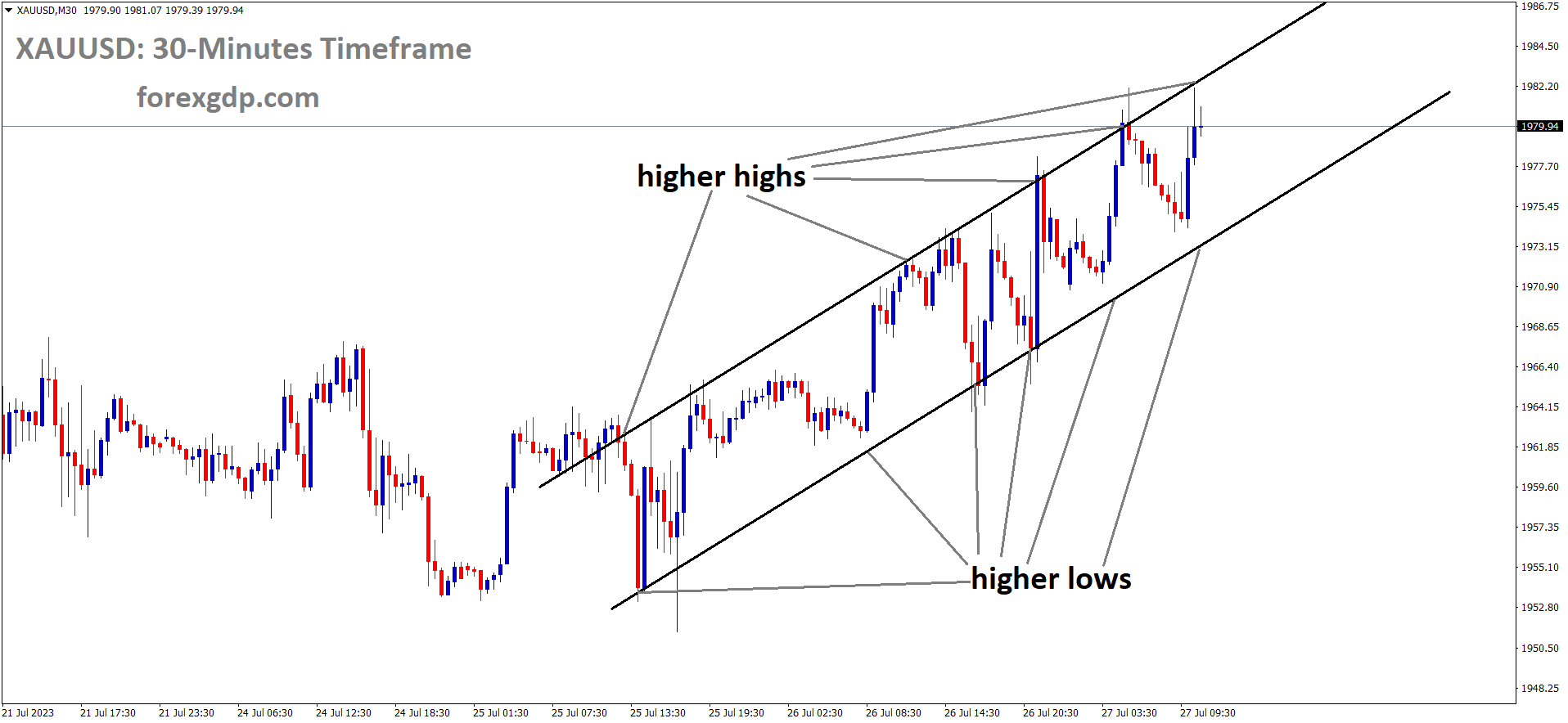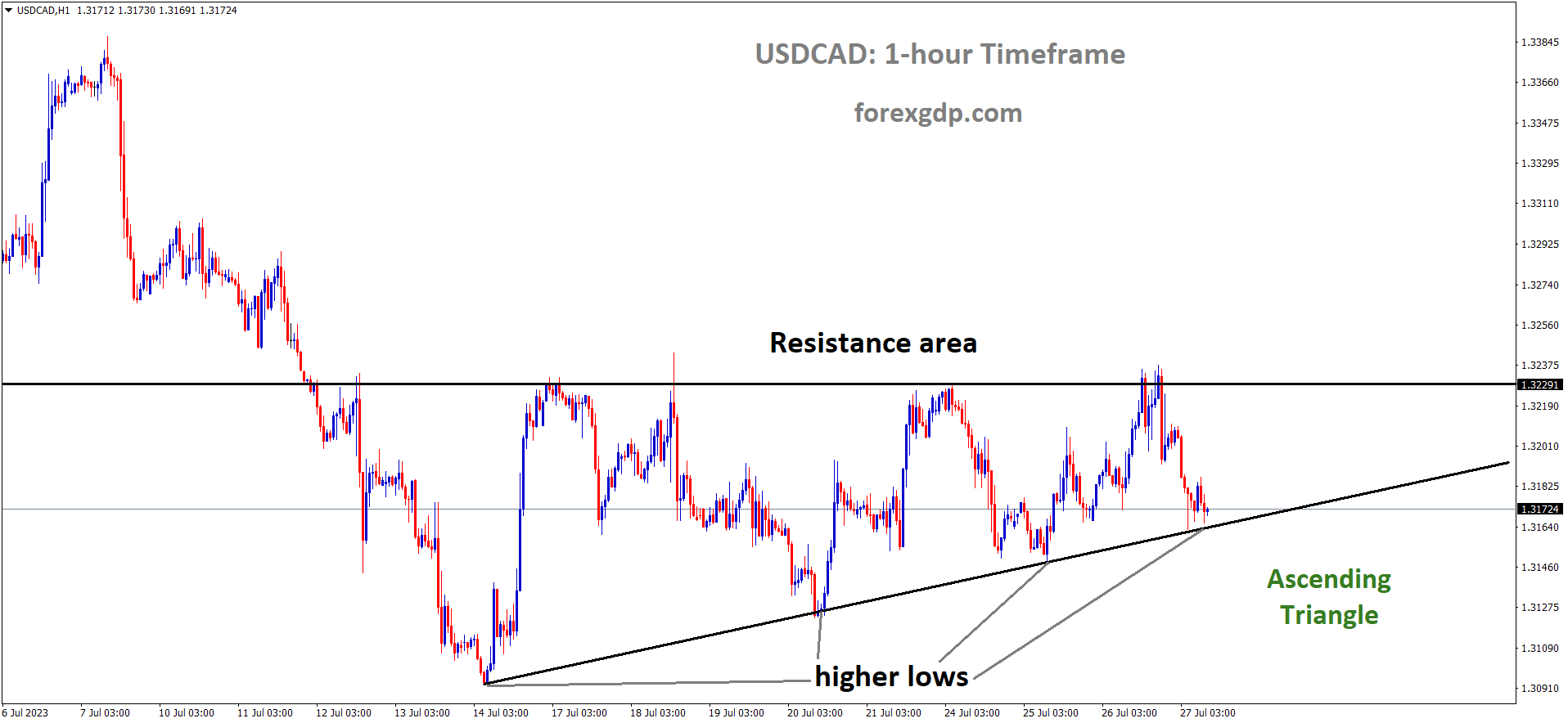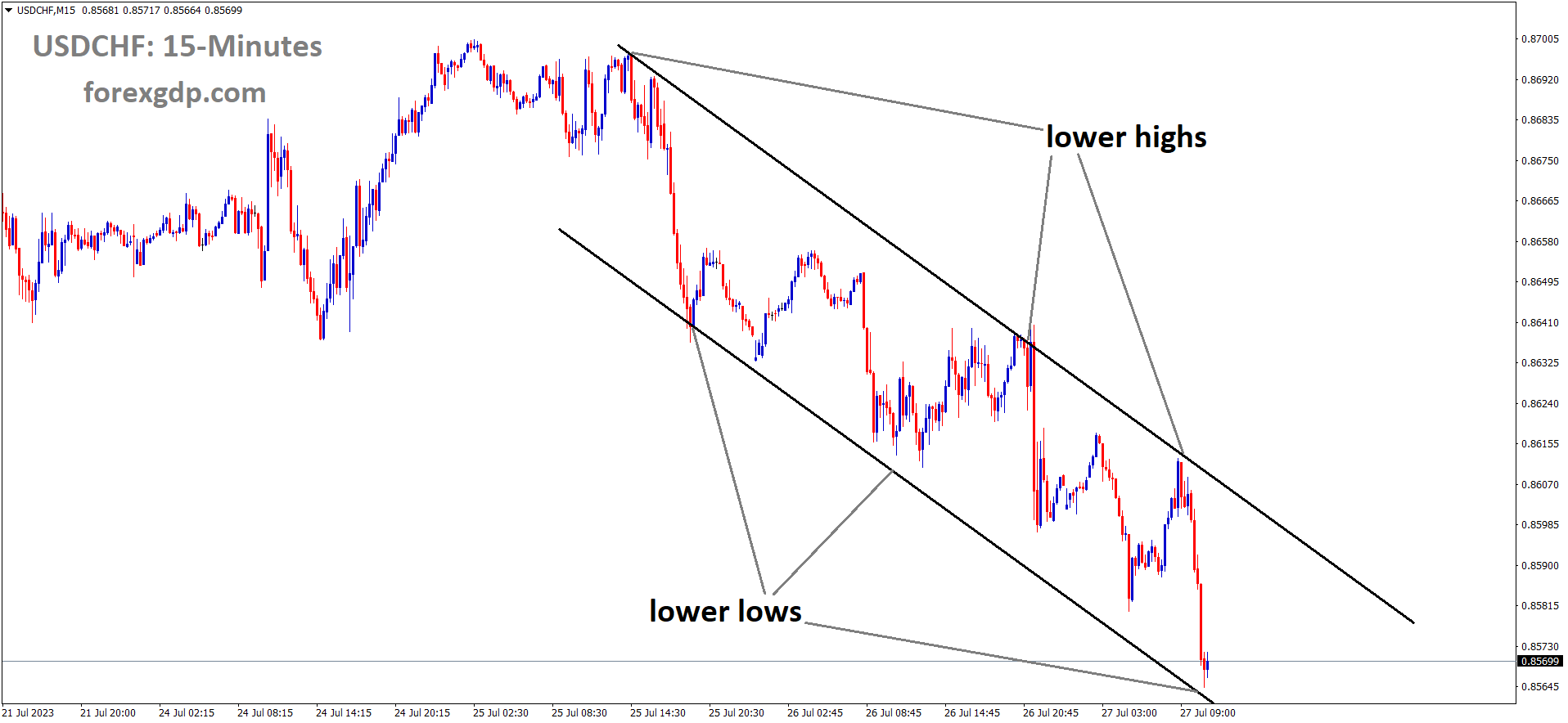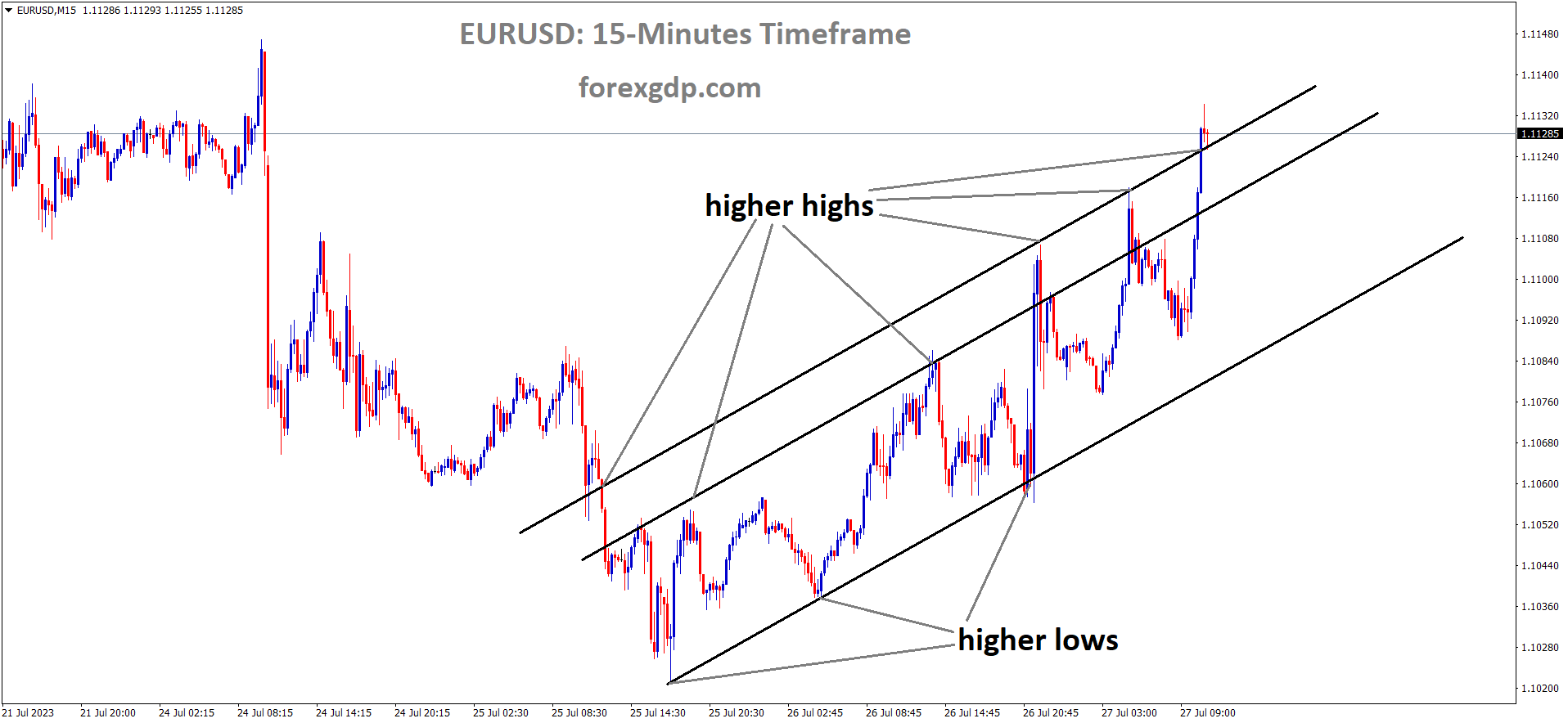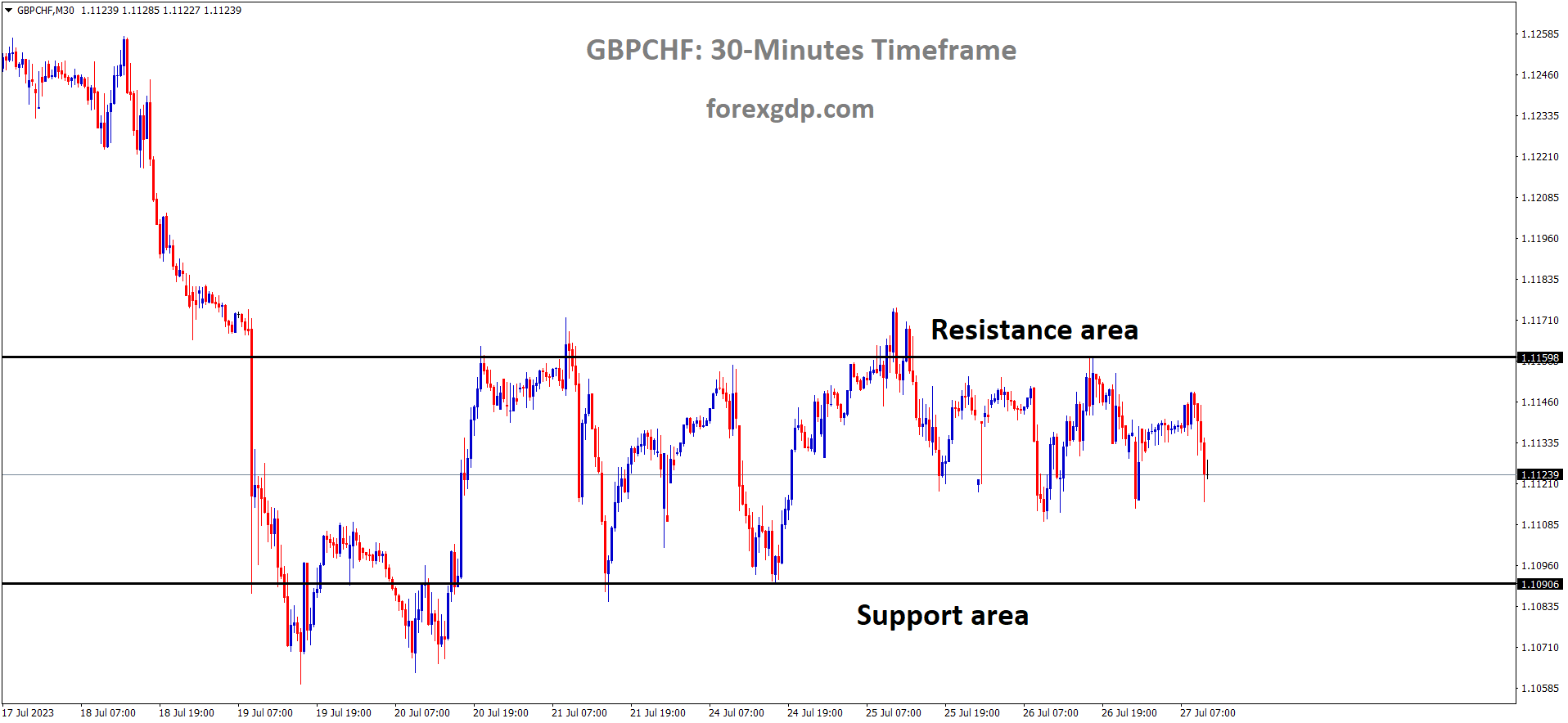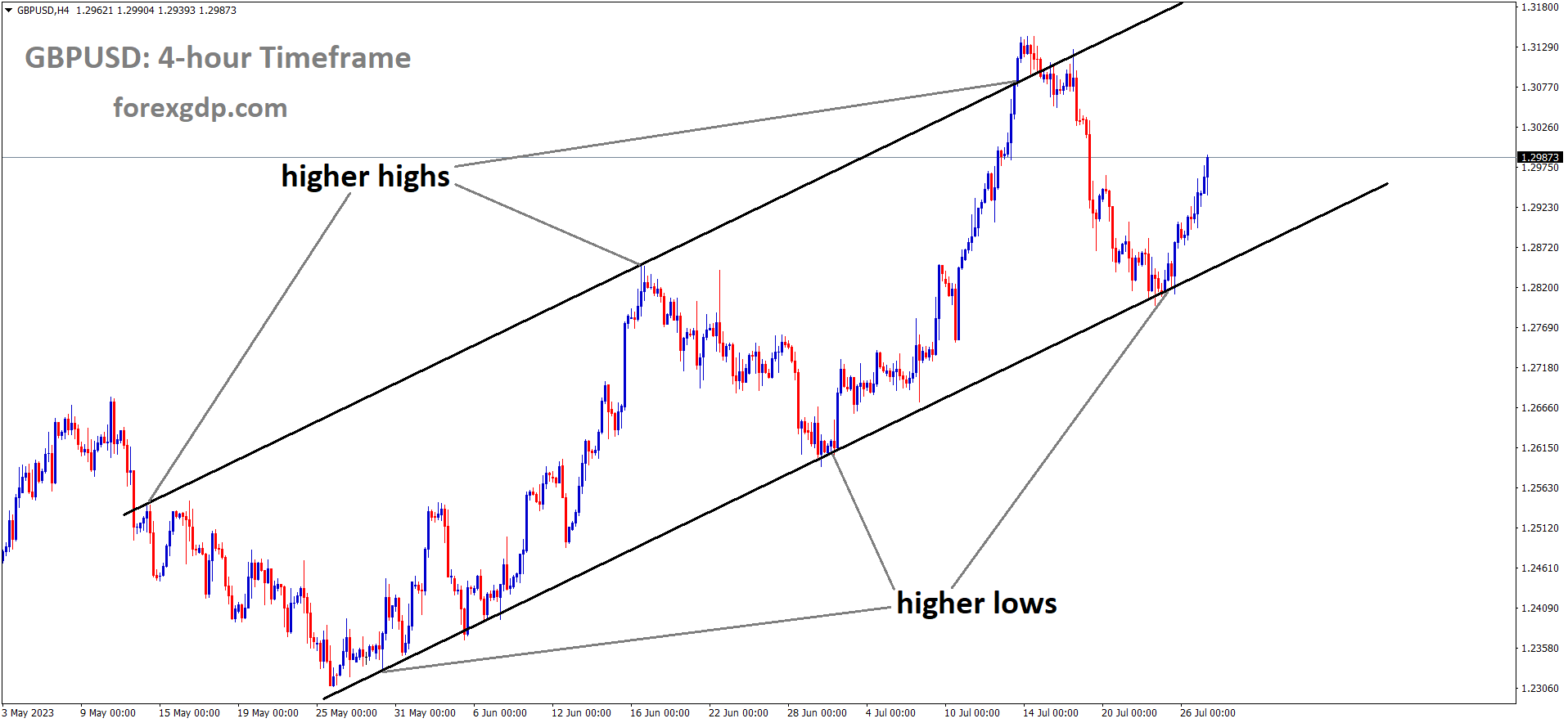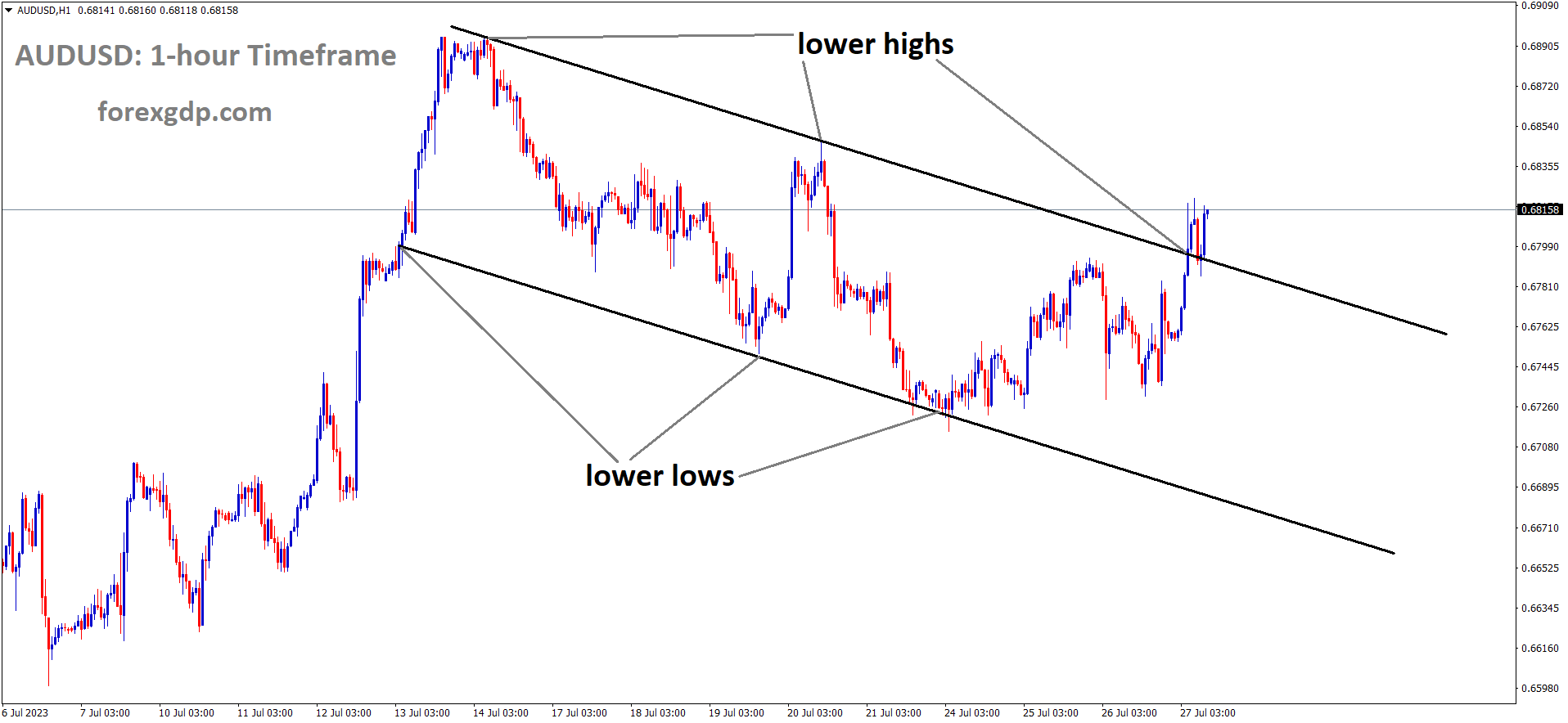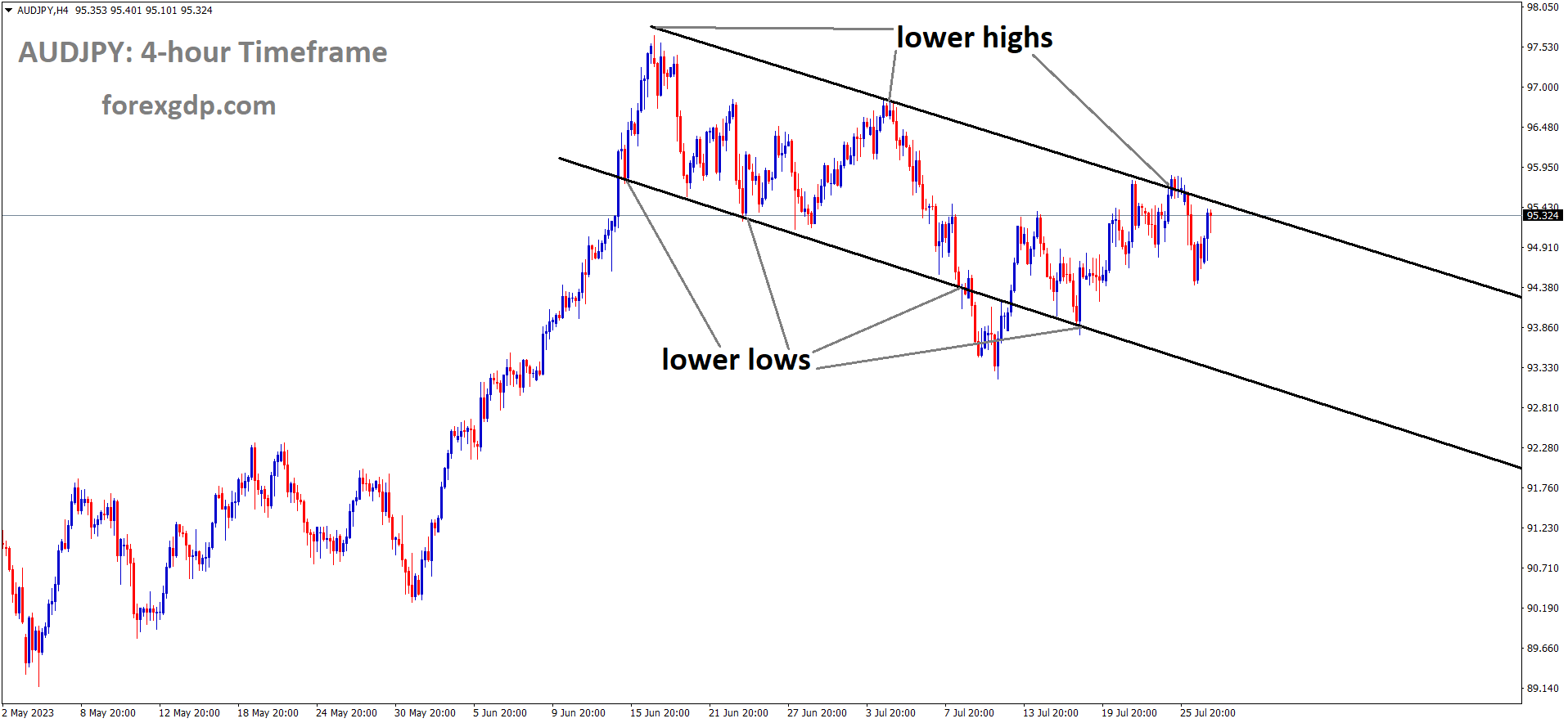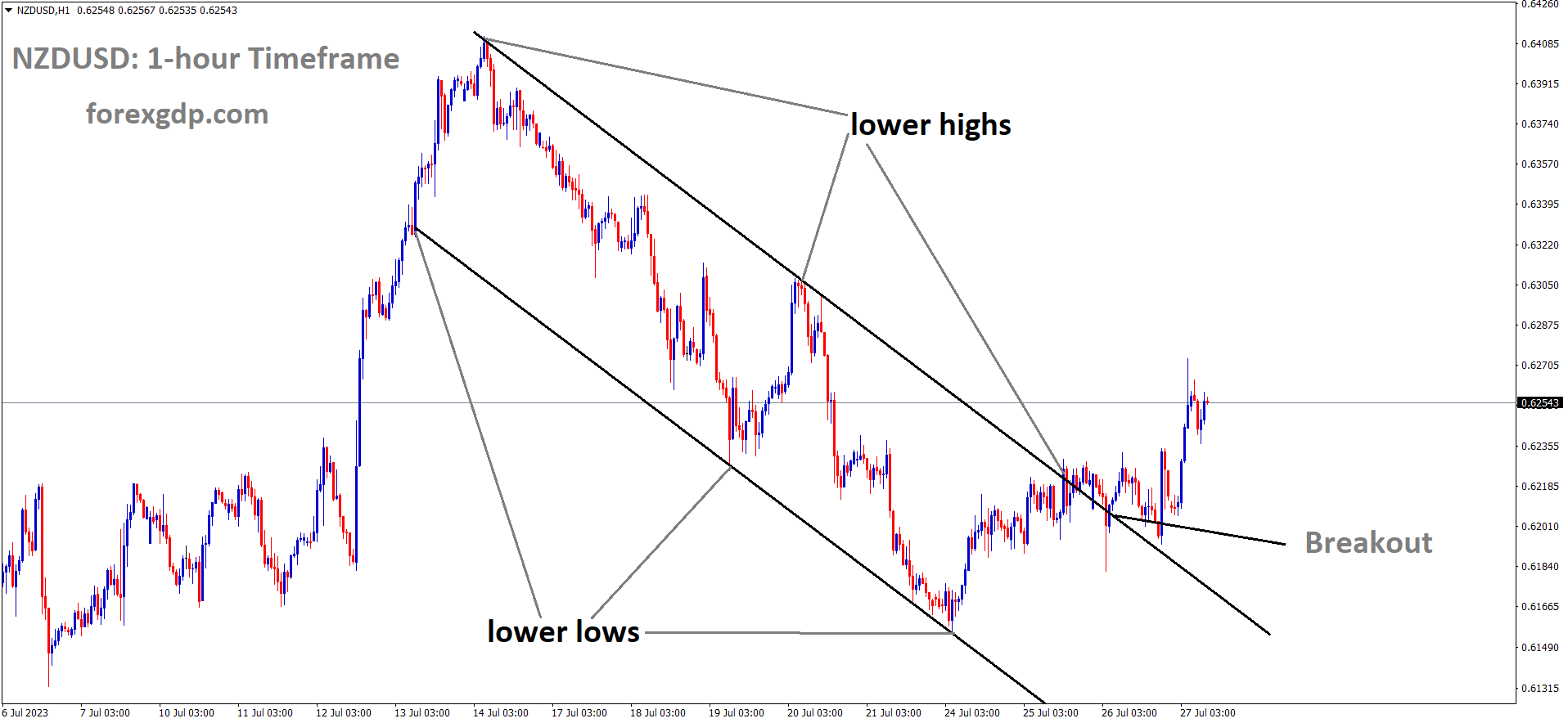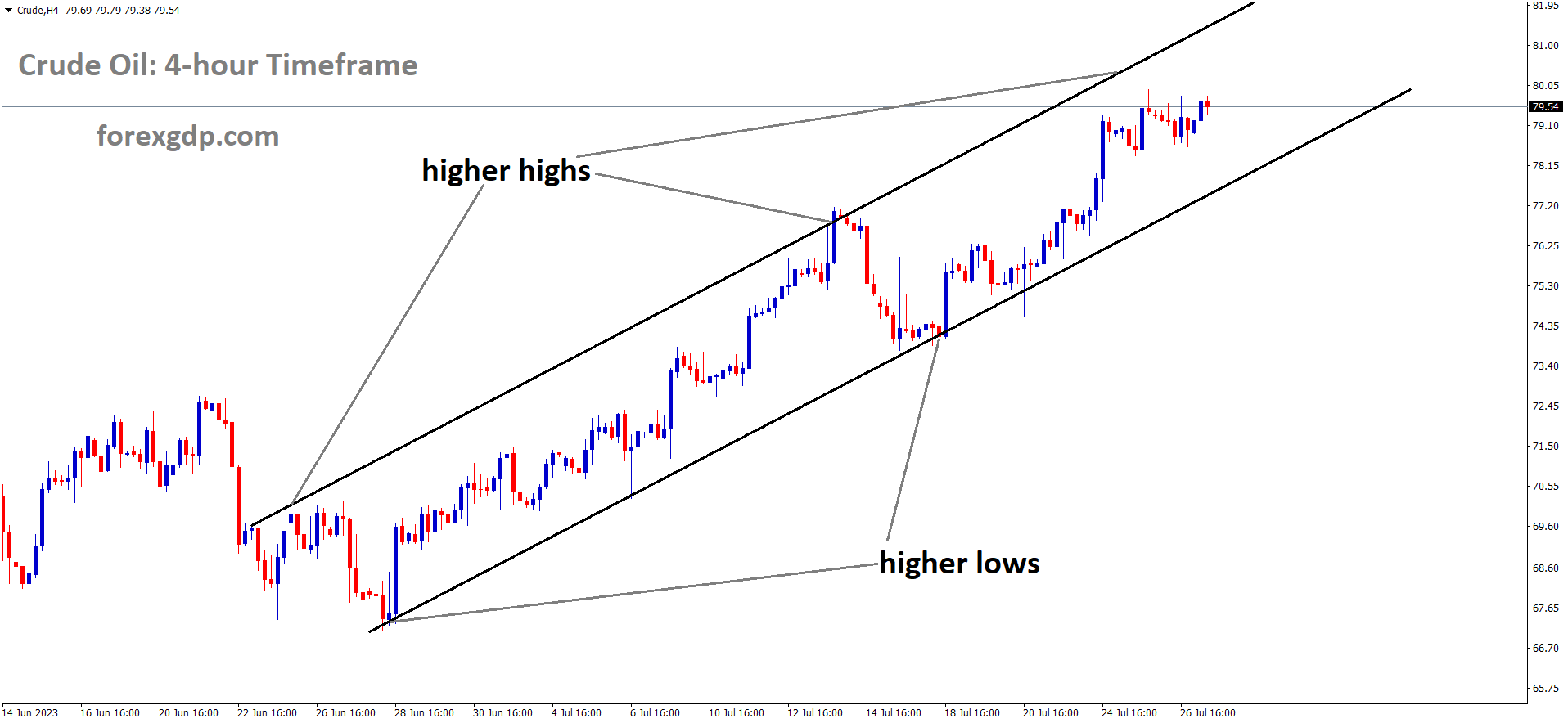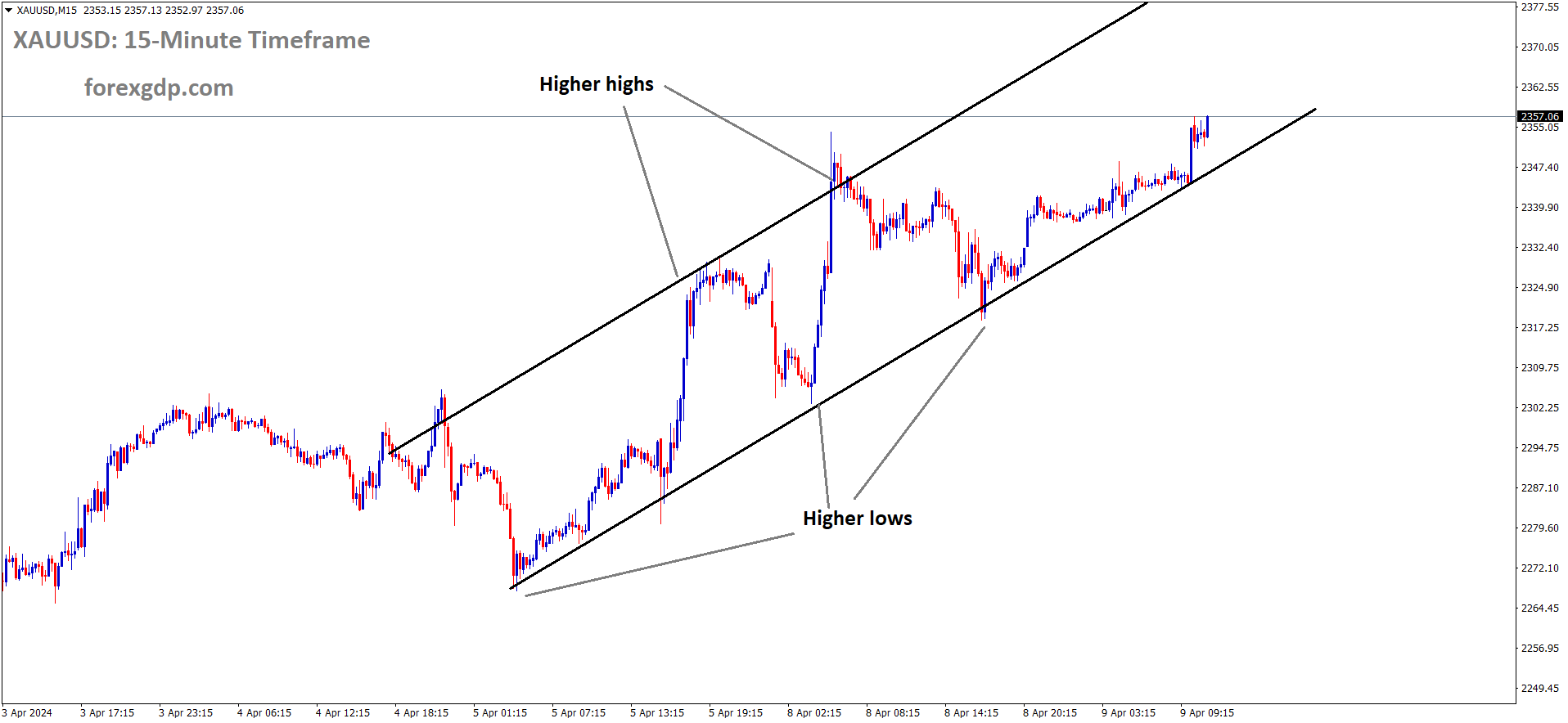XAUUSD Analysis
XAUUSD Gold price is moving in an Ascending channel and the market has reached the higher high area of the channel.
The ECB will raise rates today as expected after the FED raised rates by 25 basis points yesterday. The economic stimulus that China is providing is helping gold prices rise. On one side, yielding assets are higher than on the other. The value of non-yielding assets is increased by China’s demand for gold.
The price of gold XAUUSD is losing momentum after reaching a high of $1,982 before the start of the European session. For the third day in a row, precious metals prices are rising on Thursday. The price of XAUUSD is currently around $1,975, up 0.19% today. As anticipated, the Federal Open Market Committee FOMC increased its target interest rate range of 5.25%-5.5% by 25 basis points bps. The rate reached its highest level in more than 22 years, having last been seen just before the collapse of the housing market in 2007. Following the rate decision, Fed Chairman Jerome Powell noted that although inflation has somewhat subsided since the middle of last year, the Fed’s 2% target “has a long way to go.” Powell did, however, leave the door open for the Fed to hold rates steady at its September meeting. He further stated that, if additional rate hikes are required, the Fed will take the incoming data into account. The Fed’s potential end-of-cycle rate-hike signals may have limited the decline in precious metal prices. As the opportunity cost of holding non-yielding bullion increases with rising interest rates, it is important to note that gold is sensitive to these changes.
However, the ECB is anticipated to increase interest rates on Thursday by 25 basis points bps. Market participants believe that in order to get inflation back on target, the ECB will increase borrowing costs in July and September. However, worries about the Eurozone’s slowing economy could persuade the central bank to hold off on raising interest rates. Investors will follow Christine Lagarde, president of the ECB, for guidance on future monetary policy. The ECB’s hawkish stance could work against the price of gold. While the post-COVID recovery has been sluggish, China, the world’s largest consumer of gold, has signalled additional support for the real estate industry and a number of initiatives to boost domestic consumption. This in turn encourages the price of gold to rise further. For gold traders, the creation of a new stimulus plan in China will be of particular interest. Moving forward, market participants will pay close attention to the US Gross Domestic Product GDP) readings for the second quarter Q2), the core Personal Consumption Expenditure PCE) Price Index MoM, Durable Goods Orders, and Initial Jobless Claims data in the afternoon. The USD price dynamics and short-term trading opportunities related to the gold price may be affected by these data.
USDCAD Analysis
USDCAD is moving in an Ascending triangle pattern and the market has reached the higher low area of the pattern.
The Canadian Dollar depends on the release of US Dollar data. Today, US GDP is forecast to decline to 1.8% from 2.0% and Core Durable Order Goods to 1.0% from 1.8%. On one side of the expectations that China’s economy will rebound from Covid-19, oil prices are surging.
USDCHF Analysis
USDCHF is moving in the Descending channel and the market has reached the lower low area of the channel.
The US Dollar has fallen against other currency pairs following the FED’s 25 basis point rate hike in the previous day. According to a Fed statement, future rate increases will be supported by data, as the economy fears that excessive tightening will cause a recession. Therefore, a gradual rate hike followed by a pause is the ideal cycle to keep the US economy healthy.
After the US Federal Reserve increased interest rates by the widely anticipated quarter percentage point and, overall, left its options open for further tightening, the US dollar declined but continued to trade within the recent range. Powell’s comments at the press conference came across as neutral and avoided taking a position. The post-meeting statement, which continued to refer to “additional policy firming” to emphasise the slight hawkish tilt, was, however, largely unchanged from the previous meeting. Overall, it seems that the approach to the next meeting should be data-dependent and patient.
Little guidance is offered by the balanced tone for the US dollar. However, the USD may continue to lag behind while risk sentiment holds steady amid a promising start to the earnings season and expectations for more Chinese stimulus. In this regard, the recent US jobs and inflation data have not been able to help the USD make up the losses they caused. The demand for the safe-haven USD may continue to decline so long as the market thinks US interest rates are close to their peak. The Bank of Japan meeting and the European Central Bank policy meeting are currently receiving significant attention.
The Swiss ZEW Survey expectations readings were -32.6, worse than expected at -31.1, and up from the previous reading of -30.8. But after the global currencies felt the heat of inflation more than the Swiss Zone, the Swiss Franc was propelled in the right direction.
In the early hours of Thursday’s Asian session, the USDCHF pair remains under pressure below the area of 0.8600. Following the Federal Open Market Committee FOMC meeting, the US dollar is generally falling. The US dollar index DXY, which compares the US dollar to six other major currencies, decreased to 100.85. The price of the pair is currently 0.8596, down 0.13% on the day. The central bank increased interest rates by 25 basis points bps to a target range of 5.25%-5.5% after the FOMC meeting, as anticipated. Chairman of the Federal Reserve Fed, Jerome Powell, stated that the FOMC will evaluate all incoming data, as well as its implications for inflation and economic activity. If the data support it, he continued, the Fed funds rate may be increased once more at the meeting in September. Following the FOMC meeting and statement, the US dollar fell significantly, which hurt the USDCHF exchange rate.
EURUSD Analysis
EURUSD is moving in an Ascending channel and the market has reached the higher high area of the channel.
In an interview, ECB President Christine Lagarde stated that raising interest rates is the best tool for containing inflation as much as possible and that the Eurozone’s inflation rate must be brought down to the target of 2%.
The rate increase this month is anticipated, but the rate increase at the September meeting is becoming less certain because of the decline in Euro-area inflation from May to June.
When the European Central Bank ECB meets on Thursday, 27 July, to decide on its monetary policy, it is anticipated that it will continue the rate hike path. As we near the ECB policy announcements, the EURUSD is edging closer to 1.1100 after peaking above 1.1200 last week and reaching its highest level in 17 months. The July meeting’s post-meeting press conference will be held as usual, but there are no new staff projections scheduled for release. As the US Dollar USD nurses losses brought on by the US Federal Reserve’s Fed dovish rate outlook, EURUSD has maintained its range around 1.1100. The Fed increased interest rates by the widely anticipated 25 basis points bps, bringing them to a 22-year high of between 5.25% and 5.50%, and left the door open for further tightening without announcing when the next liftoff would occur. Powell avoided making any predictions and emphasised a data-dependent and meeting-by-meeting strategy. While the benchmark 10-year US Treasury bond yield remains lower, around 3.85%, US S&P 500 futures profit from risk flows.
German IFO Business Climate Index dropped to 87.3 in July from 88.6 in June and 88.0 in the consensus estimate, according to data released on Tuesday. The third quarter of the year is likely to see a decline in German GDP, according to Institute economist Klaus Wohlrabe. The Consumer Confidence Index for the US Conference Board increased from 110.1 revised from 109.7 in June to 117.0. The indicator revealed that US consumer sentiment continued to improve in July. The ECB event is likely to give the EURUSD pair short-term direction while the markets look for new trading opportunities in the US advance Q2 GDP and Jobless Claims data. On Thursday at 12:15 GMT, the European Central Bank is anticipated to raise interest rates by 25 basis points bps, bringing the deposit rate from 3.50% to 3.75%. With a probability of approximately 97%, such a rate increase is already fully expected. In June, the central bank increased rates by 25 basis points, slowing the rate of increase due to growing recessionary concerns. In an interview with La Provence in early July, President Lagarde stated that we still have work to do to bring inflation back down to our target. She stated in her opening remarks at the ECB Forum on Central Banking, in Sintra, last month, We need to bring rates into sufficiently restrictive territory to lock in our policy tightening. Lagarde questioned, Are we done? , at the July post-meeting press conference. Have we reached our destination? No. We are not yet where we want to be. Do we still need to cover this ground? Yes, there is still much to cover. The ECB’s continued commitment to bringing inflation down to its 2.0% target, according to Lagarde’s hawkish rhetoric, serves as justification for this month’s anticipated 25 basis point rate hike.
The Harmonised Index of Consumer Prices HICP for the Eurozone is currently at 5.5% in June, a sharp decline from May’s 6.1% increase as we approach the crucial ECB decision. In June, the bloc’s Core HICP increased by 5.4% YoY, less than analysts had anticipated it would grow by 5.5%. Several ECB policymakers resisted the expectation of another rate increase in September as a result of soft Eurozone inflation data. The Governing Council member Klaas Knot’s dovish comments from the previous week were what put an end to the EURUSD pair’s uptrend. Knot is known for being a hawk. Rate increases after July are likely but not guaranteed, according to Knot. Ignazio Visco, a colleague of his, said that inflation may drop more quickly than forecast. Yannis Stournaras, an ECB policymaker, responded, the argument that inflation is falling and we have found that we are at the optimal point that further increases of interest rates might damage the economy, when asked what would argue in favour of ending the rate increases rather than going further. The recent dovish turn in the ECB’s communication indicates that the bank’s cues regarding the direction of interest rates in September are anticipated to be of the utmost significance for the future direction of the Euro, ultimately having an impact on the EURUSD valuations. The disappointing Eurozone and German preliminary Manufacturing and Services PMIs for July lend support to the idea that the bloc is headed for a recession, which justifies the dovish ECB expectations.
GBPCHF Analysis
GBPCHF is moving in the Box pattern and the market has fallen from the resistance area of the pattern.
In terms of the Swiss franc, the Centre for European Economic Research’s Swiss ZEW Survey Expectations data showed that the figure was -32.6 versus -30.8 previously and worse than expected 31.1. Given that China is the second-largest economy in the world, there is considerable concern about whether China will adhere to its policy commitments. Chinese news outlet Xinhua reported on Tuesday that policymakers in China would adjust their economic strategy in order to boost confidence and reduce risks. Market participants will monitor headlines pertaining to the Chinese stimulus plan. The absence of this development might be advantageous for the Swiss Franc, a well-known safe-haven currency. Additionally, the focus is still on the heightened tension between China and the US. The KOF Leading Indicator for July may provide information about the movement of the Swiss Franc. Market participants will also keep an eye on the core Personal Consumption Expenditure PCE Price Index MoM and US Advance GDP QoQ for signs of new momentum. Trading opportunities will be found near the USDCHF pair as traders keep an eye on this development.
GBPUSD Analysis
GBPUSD is moving in an Ascending channel and the market has rebounded from the higher low area of the channel.
The fact that UK inflation in June has decreased is largely positive news for the Bank of England’s rate hike programme. The possibility of a postponement of the FED rate hike at the next meeting is another benefit for the pound. Rate increases are anticipated more from the Bank of England than the FED in upcoming meetings as US inflation is cooling faster than UK inflation.
The GBPUSD pair has risen sharply to surpass the previous day’s highs and has maintained its course in terms of the technical bullish correction. As predicted, the Federal Reserve, or Fed, increased its interest rate decision by 25 basis points to 5.25–5.50%. FOMC vote, according to Fed, was unanimous. Due to the robust H1 labour market, the CBO revised its 2023 US real Gross Domestic Product growth forecast from 0.1% to 0.9%. Fed Will take into account the level of additional firming to control inflation. We will carry out the previously announced plans to continue reducing our bond holdings. Although the exact impact on employment, inflation, and economic activity is still unknown, tighter credit conditions are likely to have an impact. Recent data suggests that economic activity has been growing at a moderate rate as opposed to the modest rate stated in the June statement. We will keep evaluating new information and how it might affect policy. And the banking system is strong and durable. Fed rate hike probability is 18% in September and 36.5% in November after FOMC, according to interest rate futures. The likelihood of a Fed rate increase was 18.9% in September and 37.3% in November prior to the FOMC.
AUDUSD Analysis
AUDUSD is moving in the Descending channel and the market has reached the lower high area of the channel.
Australian Q2 CPI reading was lower than anticipated, which caused the Australian dollar to fall against the US dollar yesterday. However, the FED rate hike, which was triggered by the upcoming meeting data, caused the Australian dollar to rise against the US dollar. This week, US data will primarily influence the Australian dollar.
The Australian DollarUS Dollar fails to cheer the Federal Reserve’s Fed inability to appease the US Dollar bulls for very long as it declines to 0.6760 during early Thursday morning in Asia. Following the disappointing inflation data from the day before, the Aussie pair traders appear to be expressing their dovish bias towards the Reserve Bank of Australia RBA by doing this. The market’s cautious attitude ahead of the top-tier US data and conflicting headlines about China may also be weighing on the risk-barometer pair. The Federal Reserve Fed increased the benchmark Fed rates by the widely anticipated 25 basis points bps, bringing them to a multi-year high in the range of 5.25%–5.50%. Following the rate decision, Fed Chairman Jerome Powell made an effort to appease the hawks by indicating his readiness for a rate increase in September while stating that the June Consumer Price Index report was “only one month’s report,” despite being welcomed. It should be noted that the attempt to appease US Dollar buyers through the rejection of recession fears failed. The Reserve Bank of Australia RBA Trimmed Mean CPI for the same period came in at 1.0% compared to 1.1% market forecasts and 1.2% prior. In contrast, Australia’s headline Consumer Price Index CPI for the second quarter Q2 of 2023 drops to 0.8% QoQ from 1.0% expected and 1.4% prior. Furthermore, the June Monthly CPI is in line with analyst expectations of 5.4% versus 5.6%.
Australian Treasurer Jim Chalmers praised the direction but added that there is still a long way to go to beat inflation in the wake of the depressing Australian inflation data.New challenges to US-China relations as a result of Washington’s push for legislation to regulate US companies’ investments in China also seem to betray the AUDUSD bears lately. The US 10-year Treasury bond yields closed around 3.87%, marking the first daily loss in three days, while Wall Street benchmarks dipped slightly. The US Dollar Index DXY, however, also fell and went on a two-day losing streak before making mediocre moves recently. Looking ahead, the second quarter’s Q2 Australian export and import price indices will be closely scrutinised for additional hints about inflation and the upcoming RBA move. Following that, it will be watched for directional clues in the preliminary readings of the US Q2 GDP Annualised, which is forecast to decline from 2.0% to 1.8% as well as the June Durable Goods Orders, which is predicted to decline from 1.8% to 1.0%. The monetary policy meeting of the European Central Bank ECB will have an impact on the US Dollar as well, so it is important to keep an eye on it for guidance.
AUDJPY Analysis
AUDJPY is moving in the Descending channel and the market has reached the lower high area of the channel.
According to Japan’s Chief Cabinet Secretary, Hirokazu Matsuno, the Bank of Japan’s monetary policy settings must have been in line with those of the Japanese government, and there is no disagreement between the two. As a result, Japan’s economy will soon reach the target of sustainable and stable inflation.
Hirokazu Matsuno, the chief cabinet secretary of Japan, broke the law via Reuters early on Thursday morning in Asia. In his most recent speech, the top diplomat expressed expectations for the Bank of Japan (BoJ), adding that he anticipates close communication between the BoJ and the government. The decision-maker also expects the BoJ to implement its monetary policy in a way that stably and sustainably reaches the country’s inflation target.
NZDUSD Analysis
NZDUSD has broken the Descending channel in upside.
The NZD economy is dull as a result of the rate hike’s suspension this month, but the Chinese economy is beginning to recover thanks to stimulus injections, and the PBOC has left rates unchanged. This week, news about USD data primarily affects the NZD.
Following Fed Chair Powell’s post-FOMC press conference, the New Zealand dollar rose a little. NZD outlook is examined by ANZ Bank economists. Since there will not be any significant local data for the rest of the week, attention is still being paid to international events particularly the ECB meeting and longer-term trends. With regard to the latter, it is getting more difficult to construct a bullish NZD story, and stability might be the best outcome. A slower economy could hurt the Kiwi, especially as global policy tightening bites, but a stronger economy would necessitate more hikes, increasing the risk of a hard landing.
A slower economy could hurt the Kiwi, particularly as global policy tightening bites, but a stronger economy would justify more hikes, increasing the risk of a hard landing. The NZD no longer has carry because the Fed policy rate is now equal to the OCR, but on the other hand, oil and commodity prices are rising, so everything is very mixed.
Crude Oil Analysis
Crude Oil Price is moving in an Ascending channel and the market has reached the higher high area of the channel.
Despite lacking downside momentum going into Thursday’s European session, USDCAD remains in the red near the intraday low. As markets wait for the first estimates of the US Gross Domestic Product GDP Annualised for the second quarter Q2, which are predicted to decline to 1.8% from 2.0%, the Loonie pair records its first daily loss in three days. Both the monetary policy announcements from the European Central Bank ECB and the US durable goods orders for June, which are likely to ease to 1.0% from 1.8% prior revised, are crucial to monitor.
Don’t trade all the time, trade forex only at the confirmed trade setups.
Get Live Free Signals now: forexgdp.com/forex-signals/

